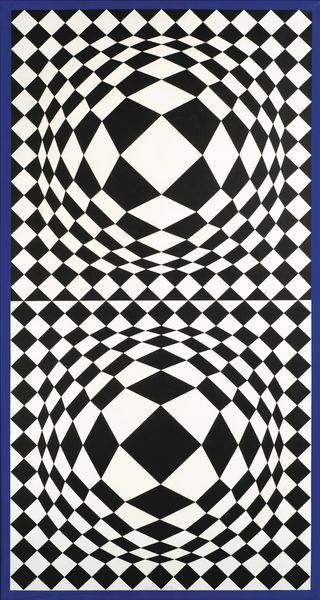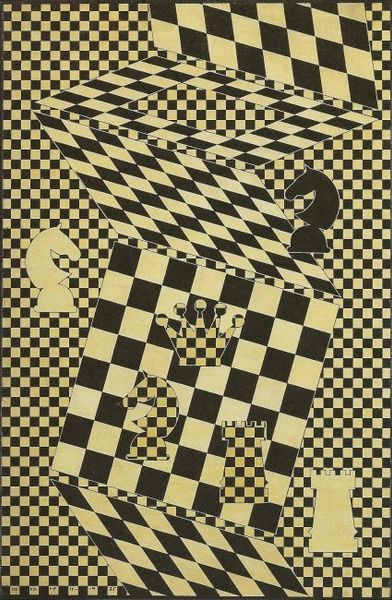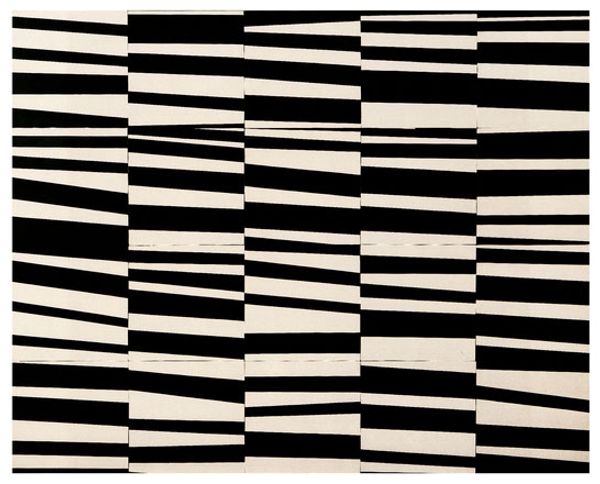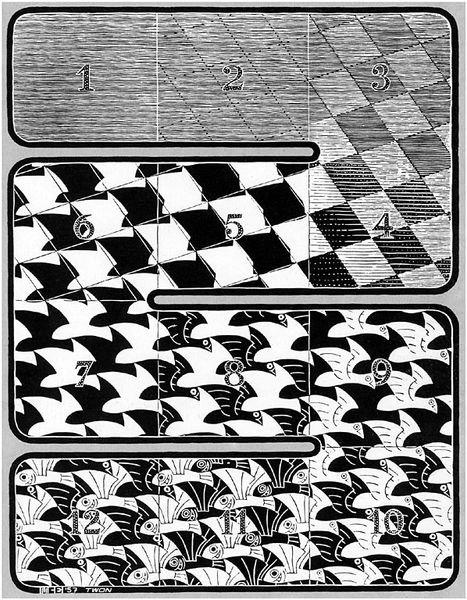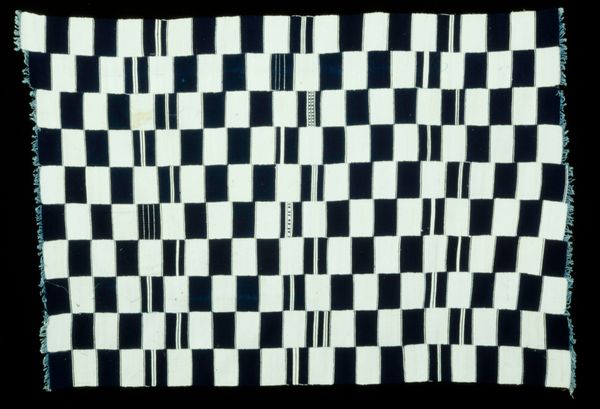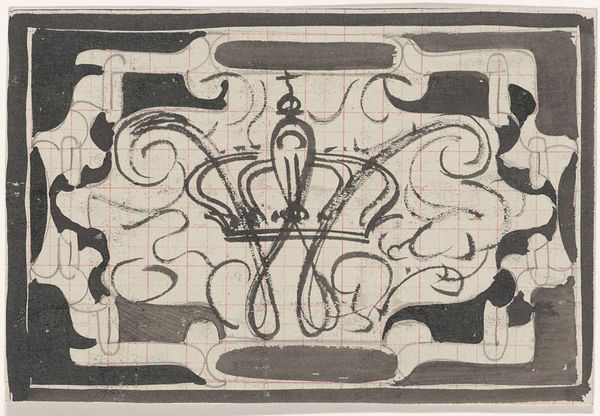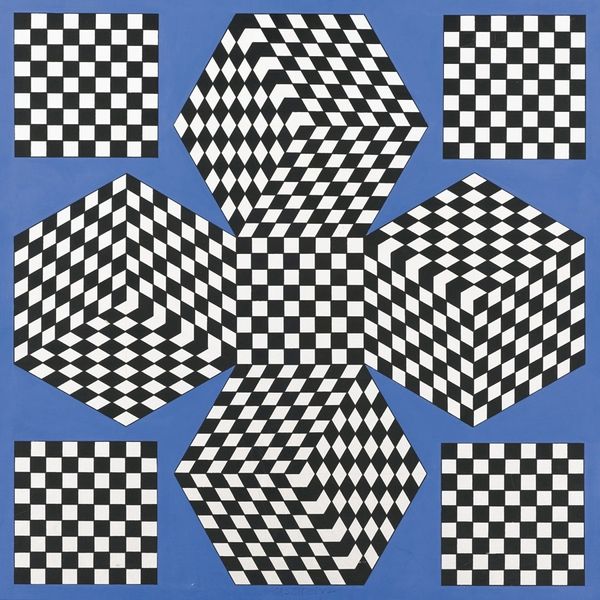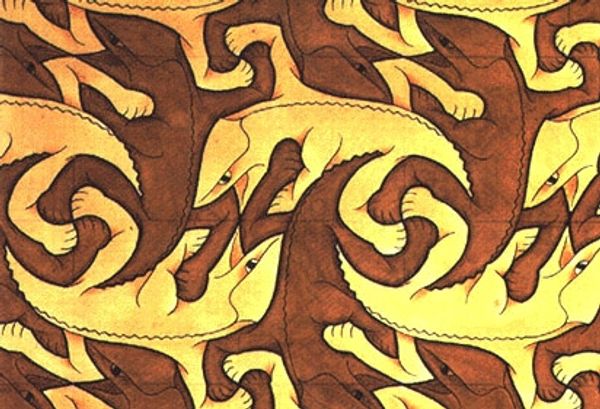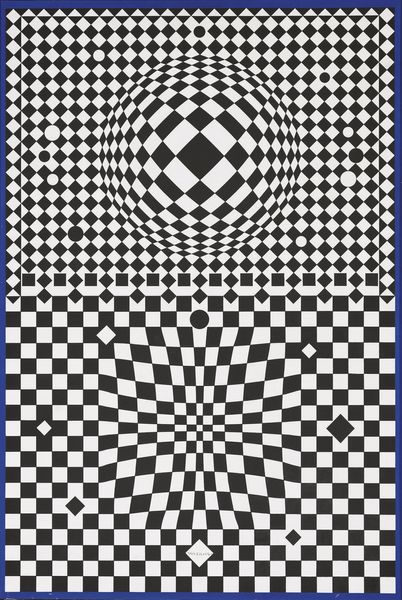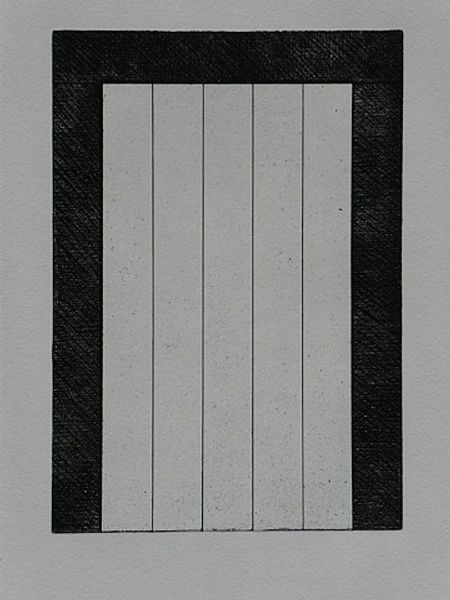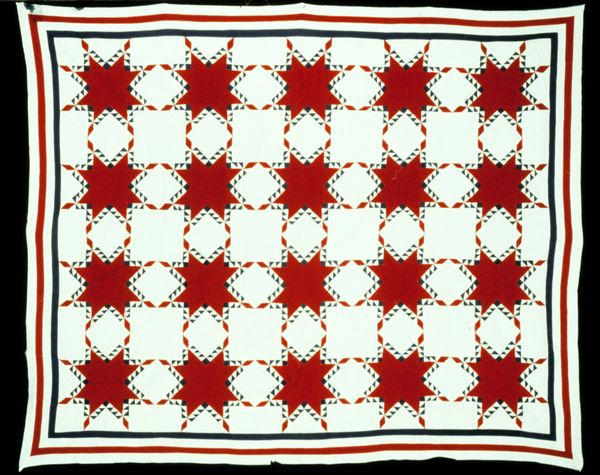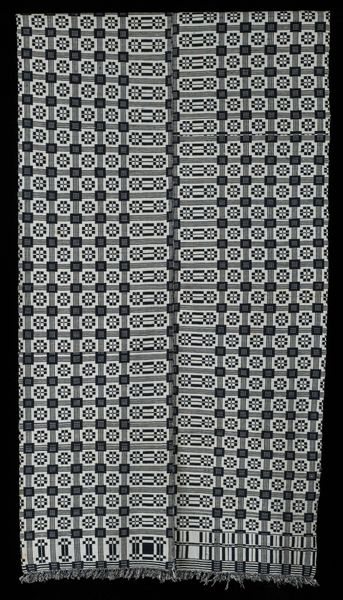
graphic-art, print
graphic-art
pattern
geometric
modernism
Curator: What strikes me first is how playfully unsettling it is – a visual paradox rendered in crisp black and white. Editor: I agree. There’s a regimented transformation on display here. What we are observing is an excerpt from M.C. Escher's "Metamorphosis II," created in 1939. It's a woodcut print. Notice how the work embodies change, shifting from geometric forms into representational imagery, it presents the idea that our very notions of stable truth might be constantly subject to revision. Curator: Precisely. The starting point is this grid of squares with the word “Metamorphose”, an image immediately understandable within a lexicon of rationality and order, transforming into reptiles and then geometrical figures again at the end of the frame. Escher masterfully employs tessellations and plays with perception to blur the lines between the concrete and the abstract. Thinkers of modernity often relied on such shapes. It reflects something fundamental to human awareness: that which is knowable shifts as we shift. Editor: But let’s not overlook the historical context of 1939. With Europe on the brink of war, “Metamorphosis II” can be understood as speaking to a world on the precipice of profound, disorienting transformation. Aren't lizards in that historical moment coded signifiers? They appear so often, seemingly by chance, when they’re standing for the political “other,” be that Black and brown bodies, or any body deemed inferior for eugenic or other reasons. Curator: Absolutely, visual elements do acquire specific valences at certain points in history. At a simpler level, lizards stand for agility, adaptability, moving between symbolic worlds in pre-Columbian iconography. And their association with chthonic knowledge means the image pulses with unseen knowledge, or a shadow world. This creates tension, making you wonder where Escher is going with this image, this transition. It seems ominous to me. Editor: Agreed. And consider, who controls the movement, and at whose expense does transformation occur? These shifts often demand a price, and such "orderly" transitions in the history of the 20th century rarely accounted for human lives. Curator: True, the elegance is definitely unsettling given this context, like watching gears turn within a perfect but ultimately cold and potentially destructive machine. Even though Escher claimed little interest in injecting real-world context into his pieces, history permeates this work in unexpected ways. Editor: Yes, in that sense, "Metamorphosis II" presents both a mathematical curiosity and a haunting metaphor for the unpredictable flux of identity, ideology, and power itself. We can’t seem to get away from that power, even today.
Comments
No comments
Be the first to comment and join the conversation on the ultimate creative platform.
